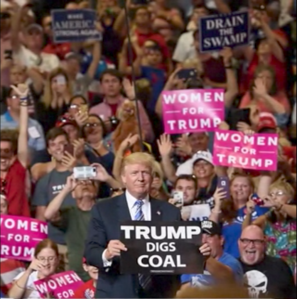I am currently working on a paper to be presented at the ISA-Northeast (that’s the International Studies Association; in short, a lot of Political Scientists) in Baltimore, MD in a few weeks’ time. I am trying to find a new take on what the notion of ‘The Politics of Fashion’ can mean and what kind of research it enables.
By focusing on ‘acclamation’ I am picking up a lively and rather recent debate in Politics/Political Science about processes of legitimising democratic political systems that go beyond the rule of law, rational and objective bureaucracies and, with regard to the populace, regular free elections in which we choose our leaders. The argument forwarded by political theorists and philosophers is that we need to pay attention to mechanisms and processes that go beyond the ‘rational-juridical’ legitimation of political order. Public events such as demonstrations, rituals and spectacles, media events and Twitter storms are all ways through which an affective orientation towards politics and political leaders is expressed. The media of course play a massive role in this in terms of reporting on, and interpreting, events, amplifying and sometimes muting such public displays of acclamation or accusation.
If we accept this argument, then the at first astounding fight over the size of the crowd at the last presidential inauguration begins to make sense – the current inhabitant of 1600 Pennsylvania Avenue cannot accept that fact that his acclamation by the crowds as the new leader of America was much weaker than that of his predecessor (fond memories: I was standing on the Mall in 2009, freezing my feet numb and celebrating the arrival of a new President with new ideas and new ideals. Good times…).

Equally, the preference of the current user of the Oval Office for a ‘permanent campaign’ in which he can mobilise his followers and make them give him the acclamation he so desires makes much more sense within this approach than the eye-rolling contempt of his detractors. Broadcast on many networks, chief among them Fox News (and his personal favourites, Fox and Friends), the images create what those of the inauguration denied him: the affirmation of a mass of people and the legitimacy that emerges from this.

The current interest in political acclamation and its affective and mass-mobilising aspects is not without some traps. It draws to some extent on the work of one of the more disagreeable scholars within political theory, Carl Schmitt. A notorious critic and ultimate opponent of liberal democracy, his opportunistic involvement with the Nazis after 1933 is one of the most troubling instances of a brilliant mind gone horribly wrong. Ironically enough, the Nazis weren’t too fond of him, seeing through his game, and at the end he barely escaped a prison sentence in the Third Reich.
But we don’t need to follow Schmitt down the dark rabbit hole where his preference for authoritarian regimes led him. His observation that ‘the people’, ‘the demos’ constitutes itself to a significant extent in affective collective moments and that political leadership is even in democracies legitimised through collective expressions of acclamation (rather than solely through the anonymous and individualised voting process that characterises democracies) is a very salient point and it can help us understand some of the problems and troubles that haunt Western democracies these days.
The paper for ISA-NE will have a lighter touch, though. Drawing on my chapter in the book, I shall firstly investigate Michelle Obama’s ‘fashion diplomacy’ at heads-of-states’ dinners at the White House, and how these were rendered public and ‘acclaimed’ by the professional fashionistas such as Robin Givhan and Vanessa Friedman.

The second part will focus on the ‘accusations’, i.e., negative acclamations that created some interesting tweet storm about and against Melania Trump. There is that awful jacket that she wore on her trip to Texas to visit the interned immigrant children (and the meaning of which she recently clarified), and there is the pith helmet she wore on her safari through Africa a short while ago. So in these two sections I cover the more traditional media (although both @robingivhan and @VVFriedman are of course on Twitter) and the more recent social media, which seem to allow for a broader ‘mass mobilisation’.
 This should be fun. The discussant at Baltimore will be Rose Shinko of American University in DC – so I better get my game on.
This should be fun. The discussant at Baltimore will be Rose Shinko of American University in DC – so I better get my game on.

If it works, I might turn it into a submission to a journal. After all that’s what we political scientists are supposed to do.
Nice. Does Rose know that you posted about her ? You are becoming a social media monster! 😊
Sent from my iPhone
>
LikeLike